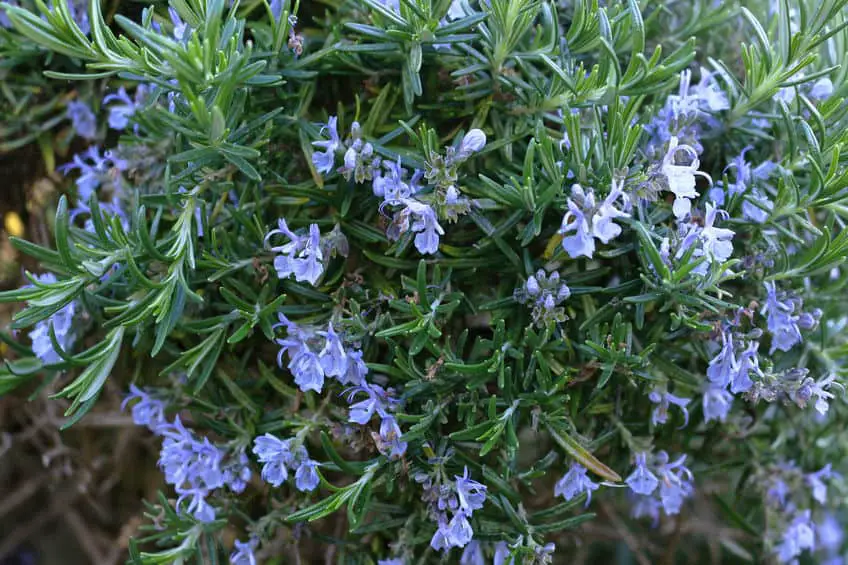
Rosemary is an evergreen Mediterranean herb with dark green, needle-shaped leaves. They produce beautiful flowers that can vary in color but like most other herbs, rosemary is not flowering constantly but only at certain times of the year.
The photo above is of a large rosemary bush full of flowers growing in the Mediterranean region that my dad took a photo of and sent to me. A bit later in the article, I have a close-up photo of a flowering rosemary plant so you can see precisely what the flowers look like.
In this article, I will explain when and how often rosemary plants flower, what the flowers look like (with photos), what it means when the plant is flowering, and what to do when it happens. Before that. however, I will explain if you can eat it or not when it is flowering.
Is Rosemary Still Good When It Flowers and Can You Eat It?
To say it as shortly and clearly as possible: Yes, rosemary is still good when it flowers.
You can eat and use the plant just as you did before it started flowering and you can even eat the flowers. Just make sure it is actually rosemary.
I usually just leave the flowers on the plant when my rosemary is flowering, but I also like to use them as a nice-looking, colorful garnish when I cook sometimes. They taste like the leaves, although slightly milder in my experience.
Flowering is a natural part of rosemary’s lifecycle and absolutely nothing to worry about. It is a crucial step in the production of seeds, which is rosemary’s way of spreading (read more about that here).
When and How Often Do Rosemary Plants Flower?
Rosemary is a perennial herb that can live for many years and like with most other perennial plants, flowering comes as part of the annual cycle.
Rosemary plants flower at different times depending on the specific variety and where in the world it is growing.
That said, the most common and popular varieties which are usually found in garden centers, nurseries, and other stores, usually flower in the spring or early summer and sometimes again around November.
What Do Rosemary Flowers Look Like?
Rosemary flowers are small and appear all over the plant when it is flowering. The flowers can vary in color and be either blue, purple, pink, or sometimes white depending on the variety of the plant.
The most common color for rosemary flowers is blue or purple like in this photo.

As I mentioned above, the color of the flowers can vary, but the shape and size are more or less the same and looks like the flowers in this photo.
What Does It Mean When Rosemary Is Flowering and What to Do
Flowering happens as a natural part of the lifecycle of rosemary plants. It is essentially the first step in the production of seeds. In this process, flowers appear and seeds start to develop until the flowers dry out and fall off, at which point the seeds can either be harvested or fall to the ground and sometimes sprout.
If you want to learn about how to harvest rosemary seeds, head over to the article on this link.
You generally don’t have to do anything special when your rosemary is flowering, although removing the flowers can help the plant grow slightly faster than otherwise.
When herbs (including rosemary) are flowering, they usually don’t grow quite as fast as before they started flowering. The energy they get through sunlight, water, and nutrients in the soil is used for producing flowers and later seeds instead of growing. If you continuously remove the flowers, you can delay this and keep the plant focusing on growing.
You can read much more about what to do when rosemary is flowering (including the best way to remove the flowers) and why it happens in the article on this link.
In my experience and opinion, it is not worth it to remove rosemary flowers. They will fall off eventually and the plant will go back into the natural growing part of its lifecycle.
I usually don’t do anything when my rosemary plants are flowering. I just leave the flowers on the plant and continue to take care of it and harvest when I need some for cooking. I do, however, sometimes take a couple of flowers and sprinkle them onto the food I cook since they look and taste nice.
